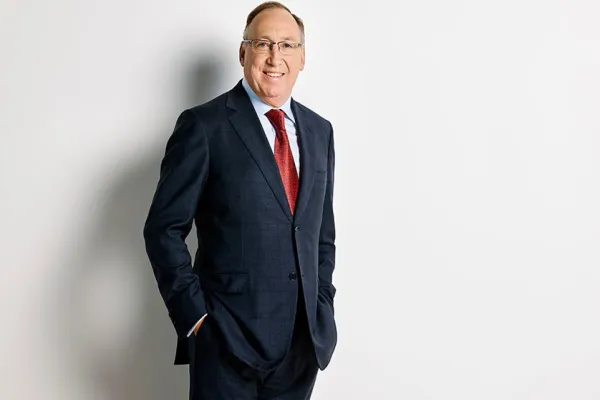The once-staid medical devices industry has caught a fever. Much of the attention lately has centered on Guidant Corp., the target in a takeover battle between Johnson & Johnson Co. and Boston Scientific Corp. until February, when the latter prevailed for $27 billion. The aggressive pursuit of Guidant came despite its highly publicized woes with malfunctioning heart-rhythm devices it manufactured: It has recalled more than 100,000 of them since the troubles began in May.Initially, Guidant's pain seemed to be a boon for industry leader Medtronic. As Guidant's share of the $5.6 billion market for implantable cardiac defibrillators fell from 35 percent to 24 percent last year, Medtronic's rose to more than 50 percent. The Minneapolis-based company's stock climbed from $51 per share in May to $59 in late January.
It was then that the third major player in the ICD market, St. Jude Medical, reported disappointing sales of ICDs. A few weeks later Medtronic said that its ICD revenues had grown by 21 percent year-over-year in the fiscal third quarter ended January 27 -- a respectable increase but less than the market had come to expect based on past performance. (Overall earnings grew by 23 percent.) Investors nervous about a slowdown in the ICD market -- the source of one quarter of Medtronic's sales -- sent its share price down to $53.
Adding to the uncertainty: a whistle-blower lawsuit by a former Medtronic employee alleging that the company offered doctors improper incentives, in the form of rich consulting contracts, to use its spinal implants. The U.S. Attorney in Boston has subpoenaed Medtronic and other device makers for documents relating to their cardiac-device sales practices. Medtronic defends the consulting arrangements and says it is cooperating fully with authorities.
Medtronic CEO Arthur Collins Jr. says investors shouldn't be preoccupied with the bad news. He says the company still enjoys strong growth prospects, particularly outside the U.S., where it derives one third of its revenues. Considering Medtronic's market-leading devices in such fast-growing therapeutic areas as spinal injuries, neurological disorders and diabetes -- and with demographics on the industry's side as baby boomers age -- it's hard to argue with him. The company is also moving into the $3.6 billion market for coronary-artery stents.
The question isn't whether Medtronic will continue to be handsomely profitable. Rather, it's whether the device maker can live up to very high expectations. Since Collins, 57, became CEO in 2001, Medtronic has averaged 16 percent annual revenue growth and roughly doubled its net income.
Collins, who holds a BA in business administration from Miami University and an MBA from the Wharton School of the University of Pennsylvania, served as a navy lieutenant in the early 1970s and later spent 14 years with pharmaceuticals company Abbott Laboratories. He joined Medtronic as president of international operations in 1992 and became CEO less than a decade later. He recently sat down with Institutional Investor Contributor Andrew Osterland.
Institutional Investor: Why did the market react negatively to your 23 percent increase in earnings last quarter?
Collins: This is the first quarter that we've had a significant negative impact on the top line from foreign exchange. For most of the past five years, the impact has been very positive. Now it's negatively affecting us and other companies with significant international business. We enter into currency hedges to protect the bottom line. That's the biggest reason earnings still grew as much as they did. On a constant-currency basis, our revenue increased by 12.3 percent.
Is the market for implantable cardiac defibrillators slowing down?
Some of the issues that have played out over the past year did raise some questions about ICD therapy from referring physicians. It contributed to a dampening in the market. But we saw growth of 23 percent in our ICD business, adjusting for currency. It's still an under-penetrated market. There are an estimated 1.6 million people in the U.S. who could benefit from ICD therapy, and to date only about 25 percent have received devices. The penetration rate is about 10 percent in Europe and lower elsewhere. We believe the market can grow by 20 percent annually.
What about doctors' and patients' concerns that the devices don't always work?
Undoubtedly, there is a need for physicians to be able to answer questions from patients. In a very small number of cases, there have been devices that didn't deliver the therapy. But most of the people who needed it received it just fine. Every time a patient has a surgical procedure, there are risks involved, but you have to weigh that against the risk of not getting the device. Four hundred and fifty thousand people will have sudden cardiac arrest this year. If you're indicated for ICD therapy but don't get the device and you have an arrest, there's a high probability that you won't survive. ICDs protect against that event.
Have inquiries into Medtronic's and other manufacturers' sales practices affected the way you do business?
No. We have disclosed all that information in our 10-Q, and we continue to cooperate with the government on their data collection requests. We have a strong set of corporate policies that govern how we interact with physicians and hospitals, and we believe our practices are lawful and ethical. We act in the best interests of patients and in consultation with the [Federal Drug Administration] and other regulatory bodies around the world.
How is Medtronic affected by the Boston ScientificGuidant deal?
We paid a lot of attention to the offers that were going back and forth between Johnson & Johnson and Boston Scientific. We couldn't acquire the company because we have more than 50 percent of the ICD market. There would be antitrust issues. We'll watch the events unfold, but our focus is on doing the best job we can for our customers and the doctors who treat them.
How do you plan to compete in the market for cardiovascular stents?
We were late in coming to the stent market. So the objective is to come in and provide some benefit in the product or in how it's delivered that hopefully gives us a strong competitive position. We launched our first drug-coated stent in Europe last fall, and we hope to have it approved for sale in the U.S. next year. Unlike the ICD market, the stent market is highly penetrated. Most of the recent growth in sales has come from a rise in prices because of the improved benefits of drug coating to reduce the chances of arteries clogging up again. It's all about competing for market share, but it is a large market and a significant opportunity for us.
Will you be able to keep growing sales by double digits annually, or is the company just getting too big for that?
Again, adjusting for the currency impact, we had top-line growth of better than 12 percent in the latest quarter. Many of our markets -- including our two largest, ICDs and spinal products -- are underpenetrated. We're the world leaders in insulin pumps for diabetics, and diabetes is a huge problem. We also think the neurological area is a large untapped market. We have opportunities for geographic expansion, as well. About one third of our business comes from outside the U.S., where penetration rates for medical device therapies tend to be lower. In terms of our overall growth targets, we have three major financial objectives: We want 15 percent annual earnings growth over any five-year period, a return on equity of more than 20 percent and a dividend payout of 20 percent of earnings.
An implantable defibrillator can cost more than $30,000. With health care costs such a big issue, are you seeing a backlash against expensive devices?
Medical devices have a high up-front cost, but they often provide therapy for many years. With pharmaceuticals, you might pay on a monthly basis when you get your prescription filled. For example, I'm on a low-dose Lipitor regimen [to reduce cholesterol levels], and the cost of it over my lifetime will be very expensive -- maybe more than if I were to, say, have a pacemaker implanted. It's a different value proposition, and the industry has to do a better job explaining it.
How important are acquisitions to the growth of Medtronic?
We make small acquisitions on a fairly routine basis, and we invest in early-stage companies to gain access to start-up companies and the intellectual property that underlies their innovation. I think our purchase of Sofamore Danek in 1999 to supplement our spinal business has been one of the most successful acquisitions in the device industry. We've made some others in our vascular business, and we bought MiniMed, which makes insulin pumps, in 2001. However, approximately 80 percent of our growth has come from existing businesses, and we increased our R&D investment in the third quarter by 16 percent, to $280 million, versus last year's. We'll continue to acquire technology, but we look toward internal growth as the main driver of our business.





